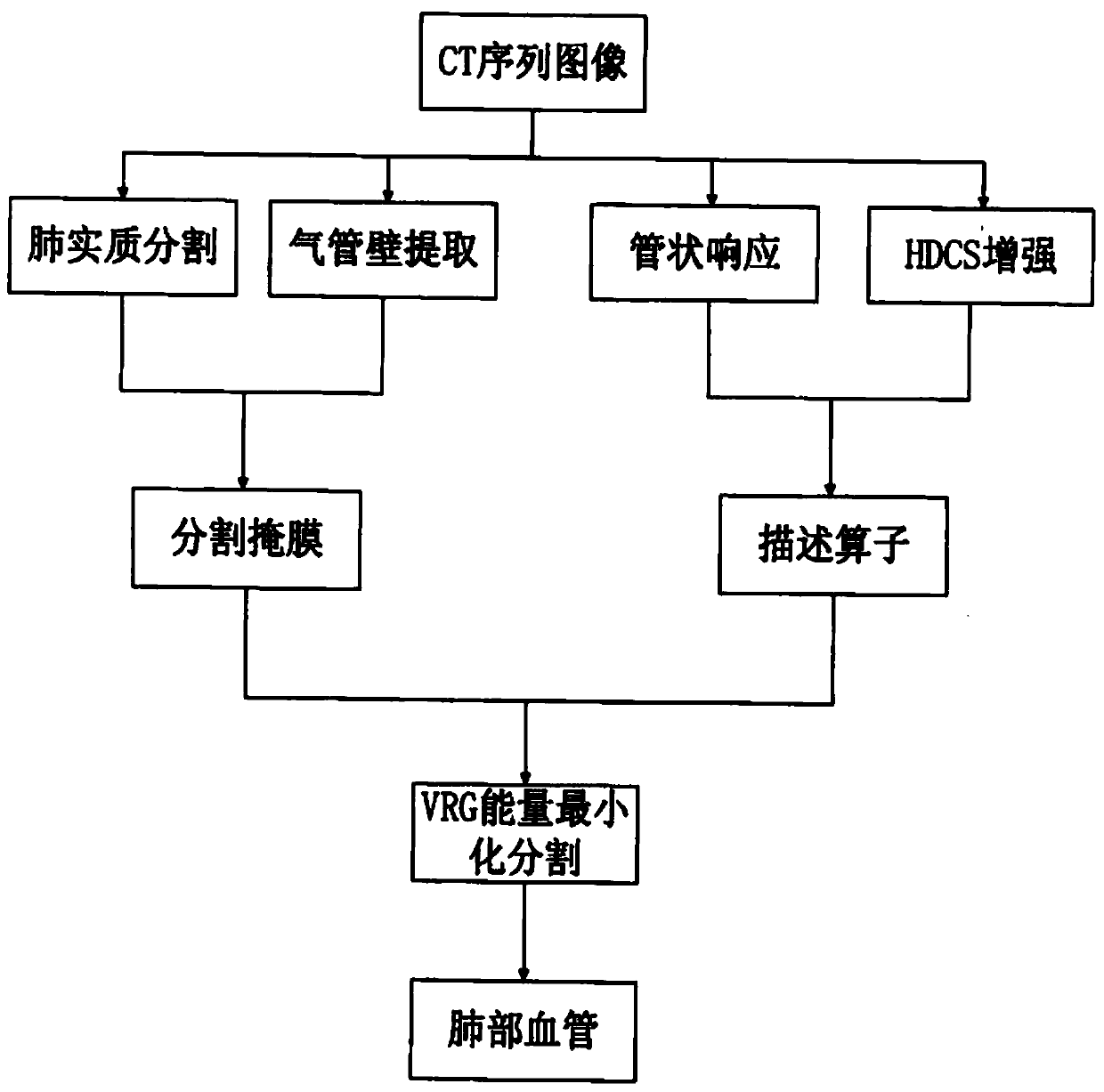Method for extracting tail end bronchial tree from lung CT image
A CT image and bronchial tree technology, applied in the field of lung CT image processing, to achieve high sensitivity, reduce system complexity, and quickly identify and locate the effect
- Summary
- Abstract
- Description
- Claims
- Application Information
AI Technical Summary
Problems solved by technology
Method used
Image
Examples
Embodiment Construction
[0012] The principles and features of the present invention are described below in conjunction with the accompanying drawings, and the examples given are only used to explain the present invention, and are not intended to limit the scope of the present invention.
[0013] Such as figure 1 As shown, a method for extracting terminal bronchial tree from lung CT images includes the following steps:
[0014] 1) Prepare initial data: The initial data includes lung texture CT image patches used for training, verification and testing, corresponding geometric information image patches and corresponding category labels.
[0015] 2) Construction of convolutional neural network: Based on the idea of skip structure in convolutional neural network, an 18-layer convolutional neural network is constructed.
[0016] 3) training based on the convolutional neural network obtained in step (2);
[0017] More specifically, the volume base layer size of the convolutional neural network is 96 con...
PUM
 Login to View More
Login to View More Abstract
Description
Claims
Application Information
 Login to View More
Login to View More - R&D
- Intellectual Property
- Life Sciences
- Materials
- Tech Scout
- Unparalleled Data Quality
- Higher Quality Content
- 60% Fewer Hallucinations
Browse by: Latest US Patents, China's latest patents, Technical Efficacy Thesaurus, Application Domain, Technology Topic, Popular Technical Reports.
© 2025 PatSnap. All rights reserved.Legal|Privacy policy|Modern Slavery Act Transparency Statement|Sitemap|About US| Contact US: help@patsnap.com

